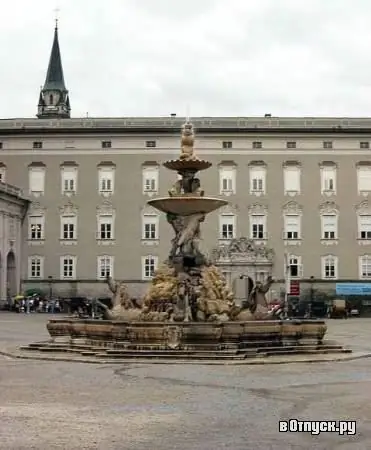
Description of the attraction
The Archbishop's residence is located on the Residenzplatz square of the same name, in the immediate vicinity of the Cathedral. There are two elegant buildings at once - the Old and New Residences, built at the beginning of the 17th century, when the city was almost completely rebuilt in the architectural style of the Renaissance. Initially, the New Residence served as a guest house, and the archbishops also lived here during the restoration of their main residence. The government offices are now located here.
The New Residence itself was built in 1619 by order of Archbishop Wolf Dietrich von Raithenau, who was deposed by the time the construction was completed, and power passed into the hands of Marcus Sittikus. The luxurious interiors were commissioned by Lucas von Hildebrandt and completed in 1727. The state rooms in the late Baroque and early classicism style are richly decorated with wall and ceiling paintings, stucco and tapestries. On the third floor there is a gallery with a magnificent collection of European painting of the 16th-19th centuries, known as the Residence Gallery. It was opened in 1923 and is represented mainly by canvases by Dutch, Spanish and Italian artists, as well as Austrian painters of the 19th century. The most famous painting kept here is the "Portrait of a Praying Woman" by Rembrandt, it is believed that the painter captured his mother.
In the outer courtyard of the residence there is a baroque fountain decorated with horses and tritons. On the opposite side of the square stands the New Residence, built in 1602, which has housed the Sattler Museum since 2004. The main exhibit of this museum is a huge city panorama created in 1824-1828. The building of the New Residence is also distinguished by an elegant old clock from 1873, and also a carillon, consisting of 35 bells, cast back in 1705, is often played in it.






